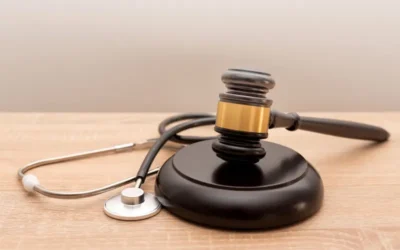Medical imaging studies provide key evidence that can help prove liability in personal injury cases. That makes such studies very important for medical record review in personal injury cases. A picture or image is much more articulate than text and is therefore accepted as concrete evidence in court. Medical record review for personal injury law firms also involves review of medical images such as X-rays, CT scans, MRI scans, and PET scans. A comprehensive review helps identify injuries that affect internal organs but do not display any outward signs. The medical review report that highlights important medical evidence helps attorneys determine the legitimacy of the personal injury claim.
In any personal injury case, the medical records of the plaintiff can prove how serious or debilitating the injury is. On the other hand, if the injury is a minor one, the treatment records can provide the evidence payers and defense attorneys need to establish that the claim is invalid, or that the plaintiff failed to follow the treating physician’s recommendations. The report generated through a medical record review of imaging studies enable jurors to clearly comprehend, assimilate and retain valuable information.
Types of Medical Imaging Studies and Their Significance
As a medical review service provider for personal injury attorneys, we know that medical imaging studies are powerful tools in litigation. They can arouse a prompt, instinctive reaction in the viewers and are much more potent than words when it comes to demonstrating the plaintiff’s condition. So, along with expert medical testimony, medical imaging studies can be a major deciding factor in a personal injury lawsuit. However, attorneys face certain challenges that pose hurdles in the way of successfully using these images in litigation. Before going on to those challenges, here is a look at the most common types of medical imaging studies requested for court proceedings.
- X-rays: These show broken/fractured bones, objects left inside a patient during surgery, spinal degeneration, and any abnormalities.
- MRI (Magnetic Resonance Imaging) scans: These imaging studies help detect brain and spinal injuries, joint disease, cancerous tumors, and cardiovascular issues.
- CT (Computed Tomography) scans: These scans can detect bone abnormalities that may not be visible in X-rays, internal bleeding, injuries to internal organs, brain swelling, and tumors.
- PET (Positron Emission Tomography): This study is often used to identify brain trauma that cannot be captured by a CT scan or MRI scan, and determine the extent of injury.
- SPECT (Single Photon Emission Computed Tomography) scans: These are similar to PET scans, but can provide true 3D information. The scan reveals damaged parts of organs such as the heart and brain; it can also indicate injuries arising from undiagnosed and untreated cerebral/cardiac conditions.
What Are the Challenges Attorneys Face?
- Attorneys who want to use medical imaging studies in litigation must ensure that the images are of high-quality so that they can be successfully presented as exhibits in briefs and at deposition. Also, they may have to electronically display and manipulate the images for the jury.
- The attorney must be able to understand the imaging technique used to capture the image, and also what the image represents before using it in court. Being untrained in medical matters, attorneys need assistance from a medical expert to interpret these imaging studies. Or, they can hire a medical review service to obtain a concise summary of all the findings that will help them understand the relevant medical facts.
- Securing, storing, moving and viewing radiology images: This being the electronic age, radiology images can be stored and transported electronically. However, these digital files may sometimes be stored in physical media such as a DVD or CD and transported to the lawyer’s office. This entails certain issues – complex digital images may not fit on a single CD or DVD; there is also a possibility that these discs could get lost or stolen during the transfer from one location to another; damages could occur during transit; also, there is no surety whether the contents of the discs are accurate or complete.
- Ensuring HIPAA compliance: Medical images, just as medical records, are considered PHI or Protected Health Information. They are bound by privacy and confidentiality requirements of the HIPAA. Attorneys must take all essential measures to safeguard the radiology images and prevent their content from being revealed to other parties without the patient’s consent or knowledge. Medical imaging studies that are stored on CDs and DVDs are at increased risk in this regard.
- Sharing the images safely and efficiently: Typically, attorneys utilize the assistance of a medical review company or a medical expert to review and analyze these images. They need to share these images, typically copied on to a CD or DVD, and transport it to the partnering agency’s office. This also involves transportation charges, delays, and providing accessibility to all the people such as the litigation team members, expert witnesses, clients, insurance companies, and the opposing attorney, all of whom who need access.
Once the medical records and imaging studies required for the personal injury lawsuit are obtained, attorneys can speed up the review process with the support of a firm providing medical record review for personal injury law firms. Medical images find use before trial to establish to the defense side that the claim is valid. During the trial, high-quality medical images provide a clear picture of the harm suffered by the plaintiff. This helps the jurors to arrive at a fair decision regarding the personal injury claim.




